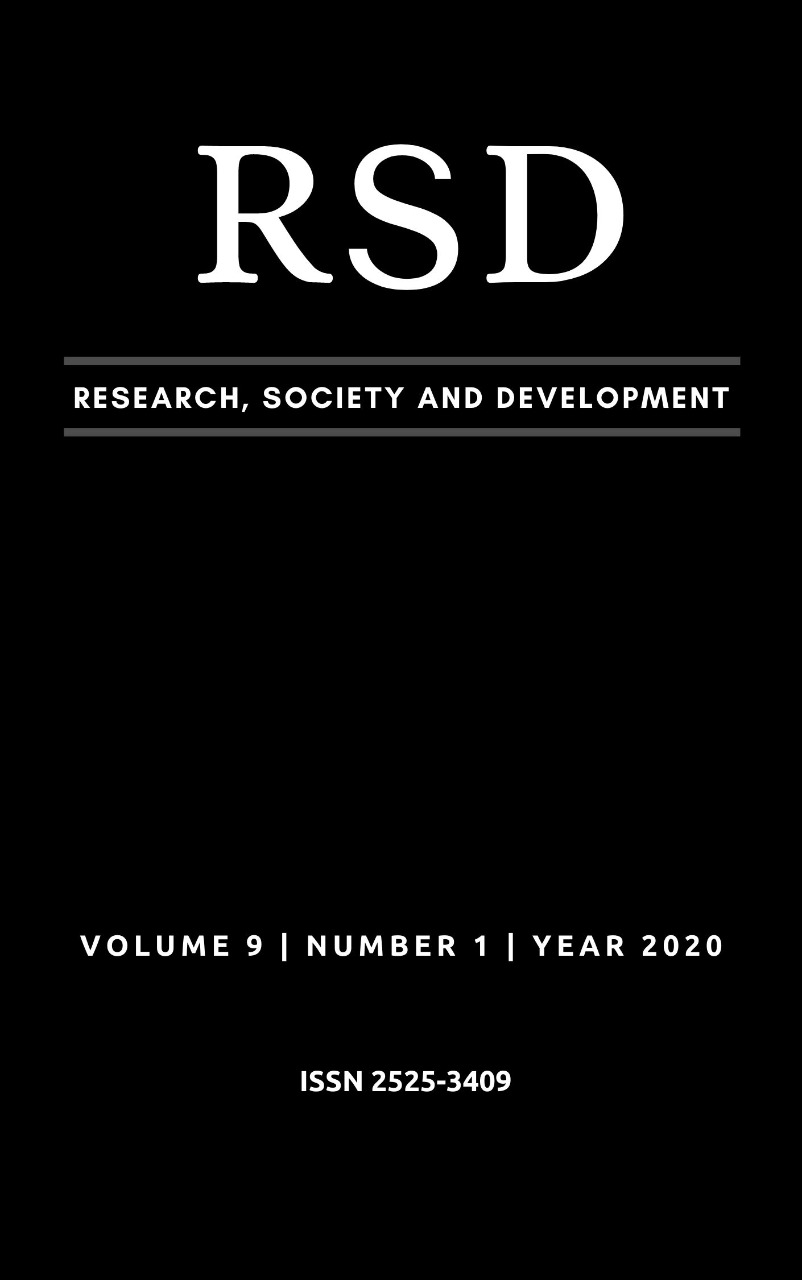Evaluación y validez evaluación del Índice de Gravedad de Emergencia modelo de clasificación de riesgos para menores de 18 años
DOI:
https://doi.org/10.33448/rsd-v9i1.1684Palabras clave:
Enfermería, Triaje, Servicios médicos de emergencia, Pediatría, Medicina de Emergencia Pediátrica.Resumen
Objetivo: El objetivo de este estudio fue evaluar la seguridad y validez del modelo de clasificación de riesgos ESI ya utilizado en el servicio de atención de emergencia de una unidad de atención de emergencia 24 horas de Canoas/RS para niños menores de 18 años. Método: Para ello, se aplicó una investigación cuantitativa, con un enfoque analítico, que se dividió en dos fases, la primera en la recopilación de datos en los boletines de servicio, y la segunda en la prueba con las enfermeras internas y externas al servicio. Analizamos el nivel de clasificación atribuido en cada atención, consumo de recursos, duración de la estancia en el servicio, traslado a hospitalización y muerte. Resultados: Mostraron debilidades en la aplicación de la clasificación de riesgo, con elevación del nivel de clasificación en relación con el procedimiento médico posterior. También hubo discrepancias en la clasificación del mismo caso por parte de diferentes enfermeras. Conclusión: La evaluación de los datos resulta en la contribución para mejorar los conocimientos y habilidades de los enfermeros en el uso de la escala, además de calificar el proceso de trabajo y conferir beneficios al usuario.
Referencias
Arrué, A.M., Neves, E.T., Buboltz, F.L., Jantsch, L.B.M., Zanon, B.P. (2013). Demanda de um pronto-socorro pediátrico: caracterização dos atendimentos de enfermagem. Revista de Enfermagem UFPE. 7(4), 1090-1097.
Feijó, V.B.E.R., Cordoni Junior, L., Souza, R.K.T., Dias, A.O. (2015). Análise da demanda atendida em unidade de urgência com classificação de risco. Saúde Debate. 39(106), 627-636.
Gilboy, N., Tanabe, P., Travers, D., Rosenau, A.M. (2011). Emergency Severity Index (ESI): A Triage Tool for Emergency Department Care (Version 4). Implementation Handbook 2012 Edition. Rockville, MD: AHRQ, 2011.
Gerhardt, T.E., Silveira, D.T. (2009). Métodos de Pesquisa. (1ª ed.). Porto Alegre: Editora da UFRGS, 2009.
Green, N.A., Durani, Y., Brecher, D., DePiero, A., Loiselle, J., Attia, M. (2012). Emergency Severity Index Version 4 A Valid and Reliable Tool in Pediatric Emergency Department Triage. Pediatric Emergency Care. 28(8), 753-757.
Jafari Rouhi, A.H., Sardashti, S., Taghizadieh, A., Barzegar, M. (2013). The Emergency Severity Index, version 4, for pediatric triage: a reliability study in Tabriz Children’s Hospital, Tabriz, Iran. International Journal of Emergency Medicine. 6(1), 36.
MAGALHÃES-BARBOSA, M. C. DE et al. CLARIPED: Um novo instrumento para classificacão de risco em emergências pediátricas. Revista Paulista de Pediatria (English Edition), v. 34, n. 3, p. 254-262, 2016.
Mistry, B., Ramirez, S.S., Kelen, G., Schmitz, P.S.K., Balhara, K.S., Levin, S., Martinez, D., Psoter, K., Anton, X., Hinson, J.S. (2017). Accuracy and Reliability of Emergency Department Triage Using the Emergency Severity Index: An International Multicenter Assessment. Annals of Emergency Medicine, 71(6), 581-587.
Raposo-do-Amaral, C.A. (2013). Uso do retalho miomucoso do músculo bucinador bilateral para o tratamento de insuficiência velofaríngea: avaliação preliminar. Revista Brasileira de Cirurgia Plástica, 28(3), 455-461.
Singer, R.F., Infante, A.A., Oppenheimer, C.C., Siegel, B. (2012). The Use of and Satisfaction with the Emergency Severity Index. Journal of Emergency Nursing. 38(2), 120-126.
Souza, C.C., Toledo, A.D., Tadeu, L.F., Chianca, T.C. (2011). Classificação de risco em pronto-socorro: concordância entre um protocolo institucional brasileiro e Manchester. Revista Latino Americana de Enfermagem. 19(1),1-8.
Travers, D.A., Waller, A.E., Katznelson, J., Agans, R. (2009). Reliability and validity of the emergency severity index for pediatric triage. Academic Emergency Medicine.16(9), 843-849.
Viola, D.C.M., Cardioli, E., Pedrotti, C.H.S., Iervolino, M., Bastos Neto, A., S., Almeida, L., R., N., Neves, H. S. S., Lottenber, C.L. (2014). Unidades avançadas: medidas de qualidade no atendimento de urgência e emergência. Revista Einstein. 12(4),492-8.
Weykamp, J.M., Pickersgill, C.S., Cecagno, D., Vieira, F.P., Siqueira, H.C.H. (2015). Acolhimento com classificação de risco nos serviços de urgência e emergência: aplicabilidade na enfermagem. Revista Rene.16(3), 327-336.
Descargas
Publicado
Número
Sección
Licencia
Los autores que publican en esta revista concuerdan con los siguientes términos:
1) Los autores mantienen los derechos de autor y conceden a la revista el derecho de primera publicación, con el trabajo simultáneamente licenciado bajo la Licencia Creative Commons Attribution que permite el compartir el trabajo con reconocimiento de la autoría y publicación inicial en esta revista.
2) Los autores tienen autorización para asumir contratos adicionales por separado, para distribución no exclusiva de la versión del trabajo publicada en esta revista (por ejemplo, publicar en repositorio institucional o como capítulo de libro), con reconocimiento de autoría y publicación inicial en esta revista.
3) Los autores tienen permiso y son estimulados a publicar y distribuir su trabajo en línea (por ejemplo, en repositorios institucionales o en su página personal) a cualquier punto antes o durante el proceso editorial, ya que esto puede generar cambios productivos, así como aumentar el impacto y la cita del trabajo publicado.


